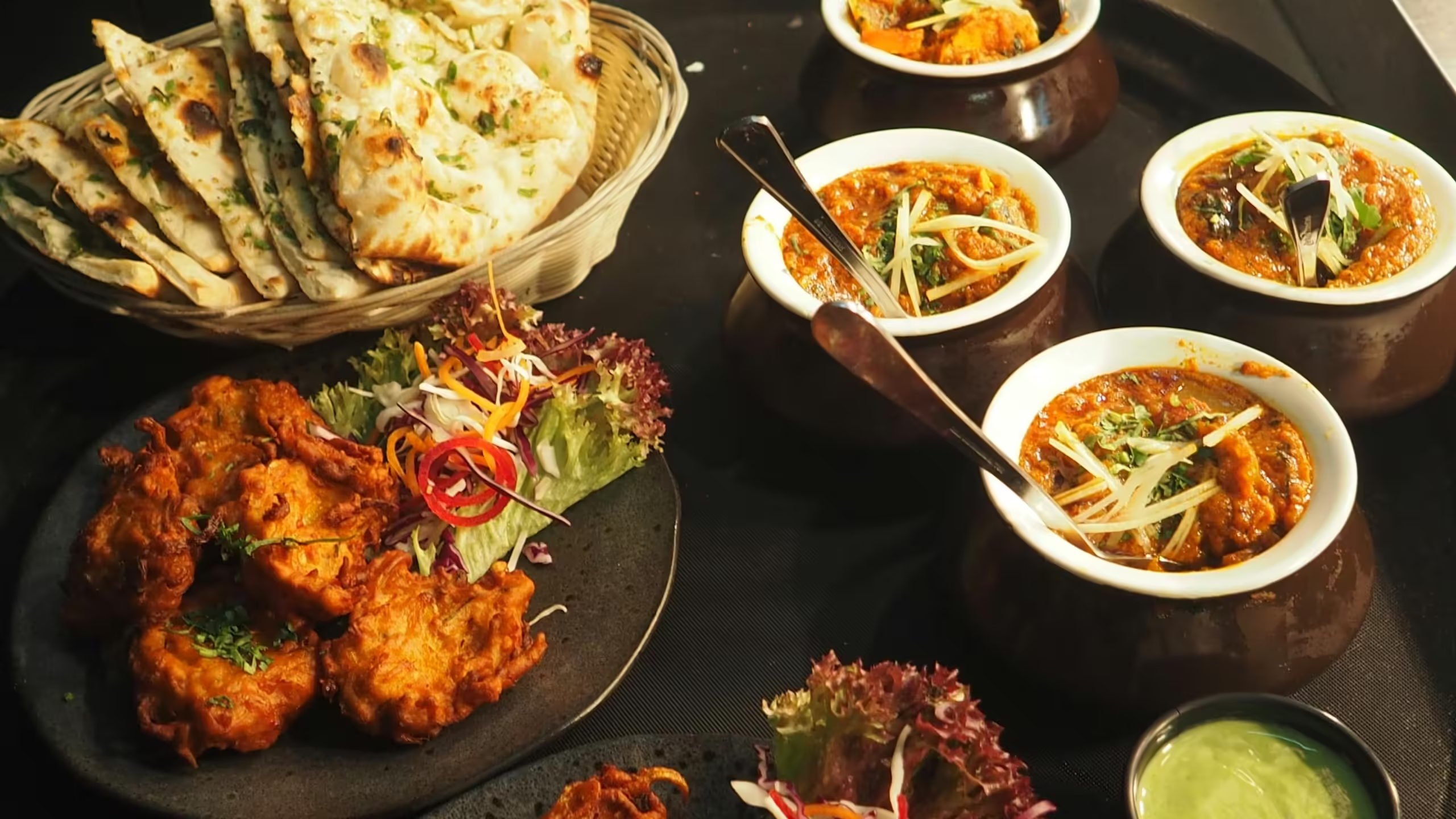The Canadian food industry is a dynamic and ever-evolving space, with restaurant franchises at its core driving growth and innovation. In 2024, certain franchises have distinguished themselves by their success and popularity.
Here’s a snapshot of the top 10 most successful restaurant franchises in Canada:
1. Tim Hortons
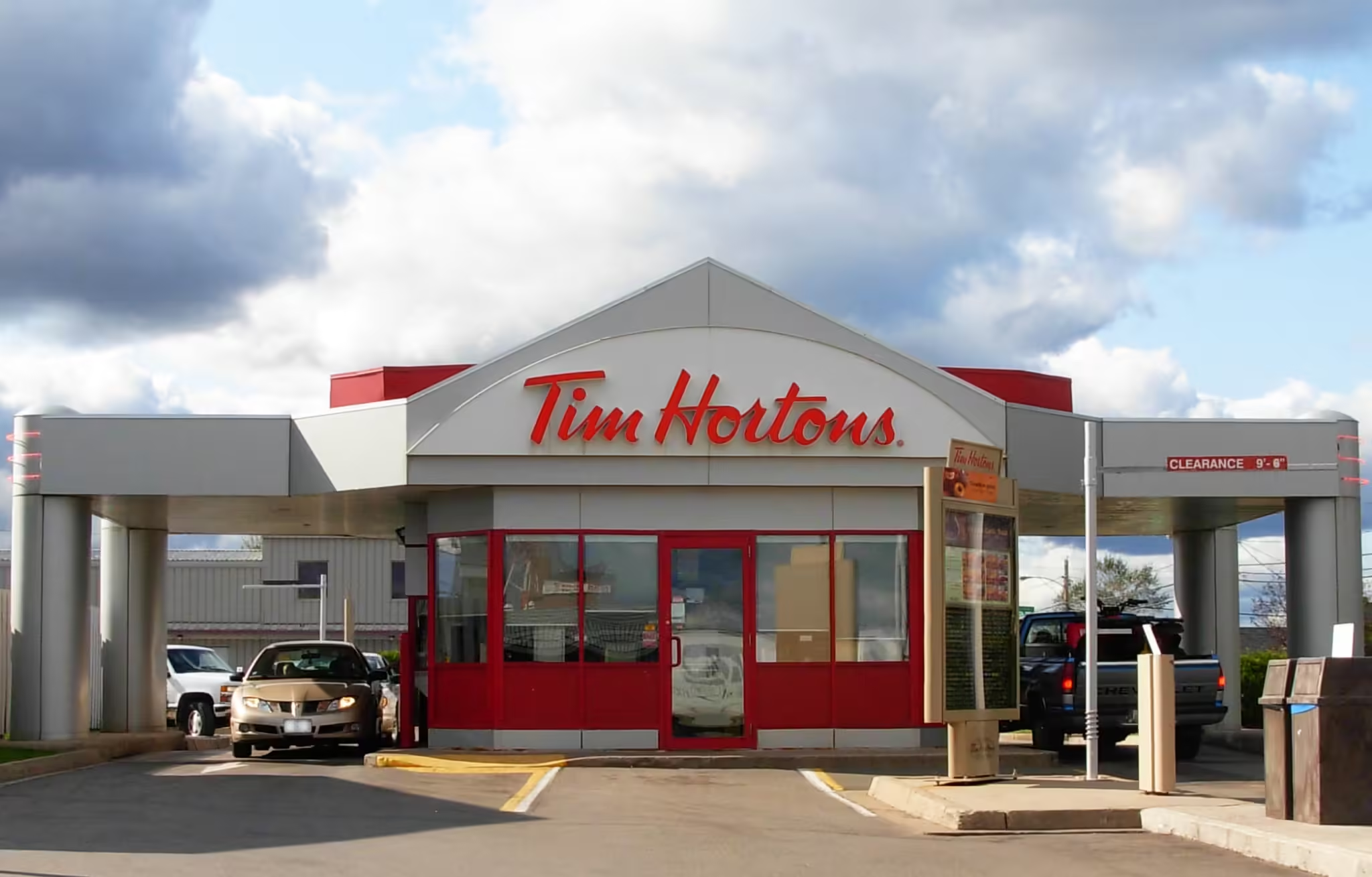
Introduction:
Tim Hortons, Canada’s cherished coffee chain, has become synonymous with Canadian culture. Renowned for its signature coffee and doughnuts, Tim Hortons has established a robust presence not just in Canada but also internationally.
Franchise Models:
The year 2024 marks the introduction of new franchise models by Tim Hortons, allowing a broader range of entrepreneurs to open both drive-thru and in-line restaurants. The master franchise rights are managed by Tim Hortons UK & Ireland Ltd., ensuring a strategic and supported expansion for new partners.
Investment Details:
- Standard Shop: $1,044,000 – $1,441,500
- Within Petro Shop: $246,500 – $641,500
- Non-Standard Shop: $94,000 – $270,000
These figures encompass the comprehensive costs required to establish a franchise, tailored to various business environments.
Space Requirements:
While specific dimensions are not provided, potential franchisees should anticipate sufficient space for customer service areas, kitchen operations, and additional features like drive-thru lanes where applicable.
Top Selling Items:
Tim Hortons’ menu is celebrated for its:
- Premium Coffee
- Assorted Doughnuts
- Timbits (Doughnut Holes)
- Freshly Baked Goods
- Hearty Breakfast Sandwiches
These items have consistently driven sales and customer satisfaction across all outlets.
Outlets Count:
There are 3,584 Tim Hortons restaurants in Canada as of April 16, 2024.
Royalty Fees:
Franchisees contribute a royalty fee of 4.5% to 6% on gross sales, which is a standard practice within the franchise industry to support brand growth and service excellence.
For entrepreneurs eager to delve into the franchise world, Tim Hortons presents a proven model of success with its beloved brand and comprehensive franchise support.
2. McDonald
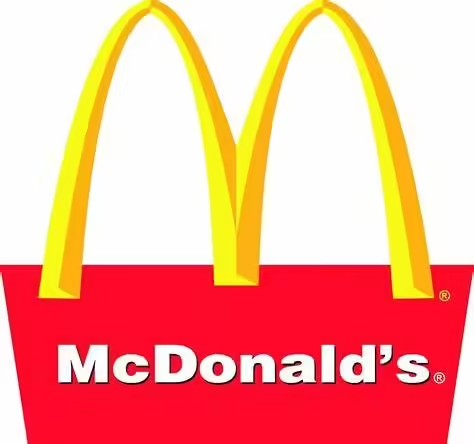
Introduction:
McDonald’s, the world-renowned fast-food chain, is celebrated for revolutionizing the quick-service restaurant industry. With its iconic golden arches, McDonald’s has become a staple in the global dining scene, offering a consistent menu of burgers, fries, and other fast-food favorites.
Franchise Models:
McDonald’s Canada and its independent franchisees, McDonald’s influence and scale to accelerate meaningful and overdue societal change for crew and managers, franchisees and their suppliers, guests, and communities. At McDonald’s you will be a part of a solid organization, a national network and a global brand that provides support at each step to becoming a franchise owner.
Investment Details:
- Total Investment: $1,469,000 – $2,503,000
- Initial Franchise Fee: $45,000
These investments cover the comprehensive costs to start and operate a McDonald’s franchise.
Space Requirements:
Prospective franchisees should ensure ample space for efficient customer flow, kitchen operations, and additional services such as drive-thru facilities.
Top Selling Items:
McDonald’s global menu highlights include:
- The iconic Big Mac
- The hearty Quarter Pounder
- Crispy Chicken McNuggets
- The famous McDonald’s Fries
- The ever-popular Happy Meal
These products have been key to McDonald’s enduring popularity and success.
Outlets Count:
There are 1,300+ McDonalds restaurants in Canada as of April 02, 2024.
For those looking to venture into the fast-food industry with a proven business model, McDonald’s offers a comprehensive franchise system backed by decades of operational success and brand recognition.
For further details or to explore franchising opportunities with McDonald’s, please consult their latest Franchise Disclosure Documents or reach out through their official franchising channels.
This brief encapsulates the franchising prospects with McDonald’s as of 2024. Should you seek further information or assistance on this subject, please do not hesitate to ask.
3. Subway

Introduction:
Subway, renowned for its submarine sandwiches, is a leader in the quick-service restaurant industry. With a focus on fresh, customizable meals, Subway offers a healthier alternative within the fast-food domain.
Franchise Models:
Subway’s franchise model empowers independent entrepreneurs with its licensed brand, products, and operational systems. The brand’s growth is bolstered by technological advancements like in-app ordering and curbside pickup.
Investment Details:
- Initial Franchise Fee: The initial franchise fee is $15,000* for each Subway Franchise location. Varies by location
- Total Investment: Depends on various factors including location, size, and store type.
These investments encompass the costs to start and operate a Subway franchise.
Space Requirements:
Subway stores are designed to be compact and efficient, with enough space for kitchen operations, customer seating, and service areas.
Top Selling Items:
Subway’s menu is celebrated for:
- A variety of submarine sandwiches
- Fresh salads
- Morning breakfast options
- Signature cookies
The brand’s strength lies in its extensive customization options.
Outlets Count:
With over 20,000 franchisees globally, Subway has a strong international presence. The latest outlet count and opportunities can be obtained from Subway’s franchising department.
Royalty Fees:
Subway franchisees pay ongoing royalties on top of the initial franchise fee. The exact royalty rate should be confirmed with Subway’s franchising information.
For those interested in joining the Subway family, the brand offers a robust franchise system with extensive support and brand recognition.
For further details or to explore franchising opportunities with Subway, please consult their latest Franchise Disclosure Documents or reach out through their official franchising channels.
4. Starbucks

Introduction:
Starbucks is a premier roaster, marketer, and retailer of specialty coffee worldwide. The company has built a reputation for providing a consistent and high-quality coffee experience.
Franchise Models:
Starbucks does not offer traditional franchises. Instead, it utilizes licensing agreements to expand its brand. These licenses are typically granted for locations like airports, hotels, campuses, and supermarkets.
Investment Required:
- Initial Costs: Average of $315,000
- Liquid Assets Requirement: $700,000
These figures represent the average initial investment and financial requirements for opening a licensed Starbucks store.
Space Required:
Starbucks stores vary in size but generally require 2,000–2,500 sq. ft. space for customer seating, product display, kitchen operations, and storage.
Top Selling Items:
Starbucks is known for its:
- Wide variety of coffee beverages
- Teas
- Fresh food
- Merchandise
- Packaged goods
The company continually innovates its menu offerings to meet customer preferences.
Number of Outlets:
As of April 24, 2024, there are 1,456 Starbucks stores across Canada. Ontario leads with 640 locations, accounting for approximately 44% of all Starbucks stores in the country.
Royalty Fee: As Starbucks operates on a licensing model rather than franchising, the traditional royalty fee structure may not apply. Licensees must adhere to Starbucks’ operational standards and may pay fees associated with the licensing agreement.
5. Boston Pizza

Introduction
Boston Pizza is one of Canada’s leading casual dining restaurant chains, offering a unique blend of delicious food, a welcoming atmosphere, and excellent customer service. Established in 1964, Boston Pizza has grown to become a household name, known for its extensive menu that caters to a wide range of tastes.
Franchise Models
Boston Pizza offers a full-service restaurant franchise model, focusing on dine-in, takeout, and delivery services. Franchisees benefit from a well-established brand, a comprehensive support system, and a proven business model that has been successful across numerous locations.
Investment Required
The initial investment for a Boston Pizza franchise ranges from $1.5 million to $2.5 million, which includes the franchise fee, construction, equipment, and initial working capital. This investment ensures franchisees have everything they need to launch a successful Boston Pizza location.
Space Required
A typical Boston Pizza restaurant requires approximately 5,000 to 6,000 square feet of space. This size accommodates dining areas, a bar section, and kitchen facilities, providing ample room for customers to enjoy their meals comfortably.
Top Selling Items
Boston Pizza’s menu features a variety of popular items, including:
- Signature pizzas
- Pasta dishes
- Gourmet burgers
- Salads
- Appetizers like wings and nachos
Number of Outlets
As of 2024, Boston Pizza boasts over 390 locations across Canada, demonstrating the brand’s widespread appeal and strong market presence.
Royalty Fee
The royalty fee for a Boston Pizza franchise is typically around 7% of gross sales. This fee covers ongoing support, marketing, and access to the brand’s proprietary systems and operational expertise.
And More
- Training and Support: Boston Pizza offers extensive training programs for new franchisees, including hands-on training at an existing restaurant and ongoing support from a dedicated franchise support team.
- Marketing: Franchisees benefit from national and local marketing campaigns designed to drive traffic and increase brand awareness.
- Community Involvement: Boston Pizza encourages franchisees to engage with their local communities through sponsorships, events, and charitable activities, enhancing the brand’s positive image and local connections.
6. Pizza Pizza
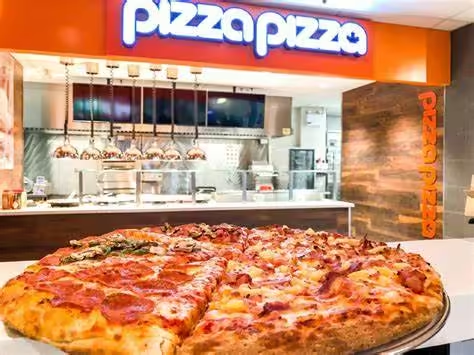
Introduction
Pizza Pizza is one of Canada’s most iconic and beloved pizza chains, known for its delicious pizzas, diverse menu, and excellent customer service. Founded in 1967, Pizza Pizza has built a strong reputation for quality and innovation, making it a popular choice for both franchisees and customers.
Franchise Models
Pizza Pizza offers several franchise models to suit different business needs, including:
- Traditional Restaurant: Full-service dine-in, takeout, and delivery.
- Non-Traditional Locations: Smaller setups in places like malls, airports, and universities.
- Express Locations: Focused primarily on takeout and delivery services.
Investment Required
The initial investment for a Pizza Pizza franchise varies depending on the location and model but typically ranges from $300,000 to $500,000. This includes the franchise fee, leasehold improvements, equipment, and initial inventory.
Space Required
The space requirements for a Pizza Pizza franchise depend on the model:
- Traditional Restaurant: Approximately 1,200 to 2,000 square feet.
- Non-Traditional Locations: Around 500 to 1,200 square feet.
- Express Locations: About 300 to 800 square feet.
Top Selling Items
Pizza Pizza’s menu features a wide range of popular items, including:
- Classic and gourmet pizzas
- Chicken wings
- Pasta dishes
- Salads
- Appetizers like garlic bread and mozzarella sticks
Number of Outlets
As of 2024, Pizza Pizza has over 750 locations across Canada, showcasing its extensive reach and popularity among Canadians.
Royalty Fee
The royalty fee for a Pizza Pizza franchise is typically 6% of gross sales. This fee includes comprehensive support services, national marketing campaigns, and access to the brand’s proprietary systems and recipes.
And More
- Training and Support: New franchisees undergo extensive training programs, including hands-on training at existing locations and ongoing operational support from a dedicated franchise support team.
- Marketing: Franchisees benefit from national and regional marketing campaigns designed to drive customer traffic and build brand recognition.
- Technology: Pizza Pizza provides franchisees with advanced technology solutions for online ordering, delivery tracking, and customer relationship management.
- Community Engagement: Pizza Pizza encourages franchisees to participate in local events and community initiatives, enhancing brand loyalty and community ties.
7. A&W
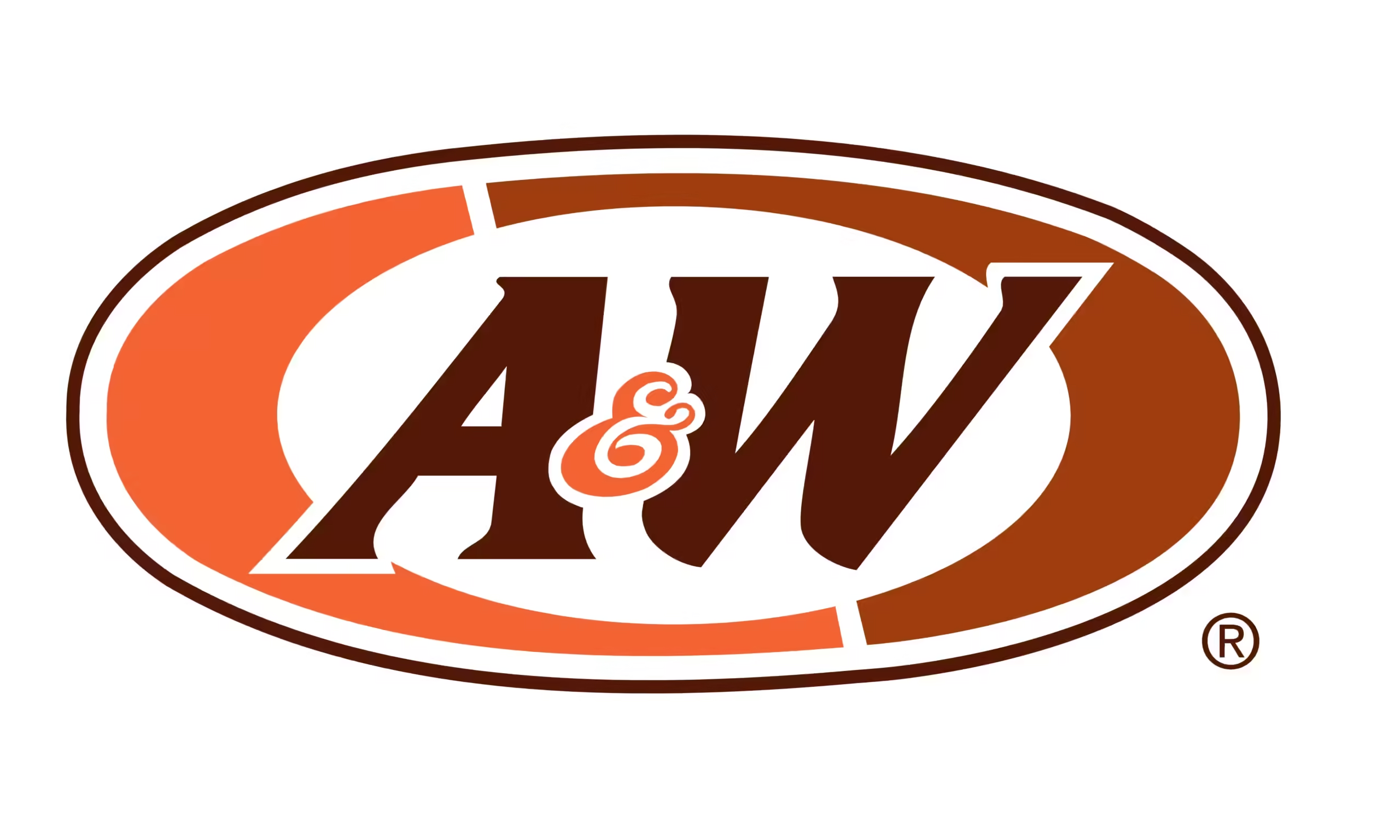
Introduction
A&W is one of Canada’s most recognized and beloved fast-food chains, known for its high-quality food, unique menu items, and commitment to sustainability. Founded in 1919, A&W has grown to become a favorite among Canadians, offering a classic fast-food experience with a modern twist.
Franchise Models
A&W offers various franchise models to suit different business environments:
- Stand-Alone Restaurants: Full-service locations with dining areas and drive-thrus.
- Urban Locations: Smaller, high-traffic urban areas focusing on takeout and delivery.
- Non-Traditional Locations: Setups in malls, airports, and universities, offering limited menus tailored to the location.
Investment Required
The initial investment for an A&W franchise typically ranges from $1 million to $1.5 million. This includes the franchise fee, construction costs, equipment, initial inventory, and working capital.
Space Required
The space requirements for an A&W franchise vary depending on the model:
- Stand-Alone Restaurants: Approximately 2,000 to 3,000 square feet.
- Urban Locations: Around 1,000 to 2,000 square feet.
- Non-Traditional Locations: About 500 to 1,200 square feet.
Top Selling Items
A&W’s menu is known for its variety and quality, featuring top-selling items such as:
- A&W Root Beer
- Teen Burger
- Mama Burger
- Chicken Buddy Burger
- Sweet Potato Fries
- Hand-breaded Chicken Tenders
Number of Outlets
As of 2024, A&W has over 1,000 locations across Canada, demonstrating its strong presence and popularity in the Canadian fast-food market.
Royalty Fee
The royalty fee for an A&W franchise is typically 5% of gross sales. This fee covers ongoing support, marketing efforts, and access to the brand’s proprietary systems and recipes.
And More
- Training and Support: A&W provides extensive training programs for new franchisees, including in-restaurant training and ongoing operational support from a dedicated franchise support team.
- Marketing: Franchisees benefit from national and regional marketing campaigns designed to drive customer traffic and enhance brand recognition.
- Sustainability Initiatives: A&W is committed to sustainability, offering initiatives such as hormone-free beef, compostable packaging, and partnerships with local farmers.
- Community Involvement: A&W encourages franchisees to engage with their local communities through events, sponsorships, and charitable activities, building strong local connections.
8. Dairy Queen
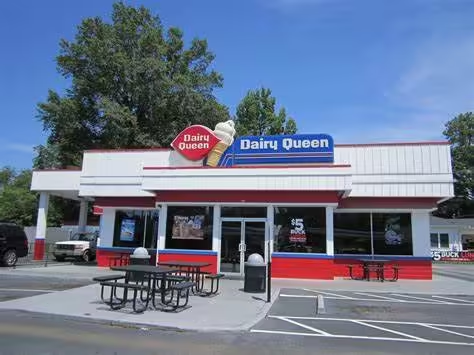
Introduction
Dairy Queen (DQ) is a globally recognized brand that has been delighting customers with its delicious ice cream treats and fast-food offerings since 1940. Known for its iconic Blizzards, sundaes, and burgers, Dairy Queen has become a favorite destination for families and individuals seeking high-quality food and desserts.
Franchise Models
Dairy Queen offers several franchise models to cater to different business environments:
- Traditional DQ Grill & Chill: Full-service restaurants with a complete menu of both food and treats.
- DQ Treat: Smaller locations focusing primarily on ice cream and treats, ideal for malls and high-traffic areas.
- Non-Traditional Locations: Setups in locations such as airports, universities, and stadiums with a tailored menu to suit the location.
Investment Required
The initial investment for a Dairy Queen franchise varies depending on the location and model but typically ranges from $400,000 to $1.2 million. This includes the franchise fee, construction costs, equipment, initial inventory, and working capital.
Space Required
The space requirements for a Dairy Queen franchise depend on the model:
- Traditional DQ Grill & Chill: Approximately 2,000 to 2,600 square feet.
- DQ Treat: Around 500 to 1,200 square feet.
- Non-Traditional Locations: About 300 to 1,000 square feet.
Top Selling Items
Dairy Queen’s menu is known for its variety and quality, featuring top-selling items such as:
- Blizzards
- DQ Cakes
- Sundaes
- Cones and Dipped Cones
- Chicken Strip Baskets
- GrillBurgers
Number of Outlets
As of 2024, Dairy Queen has over 700 locations across Canada, showcasing its extensive reach and popularity among Canadians.
Royalty Fee
The royalty fee for a Dairy Queen franchise is typically 4-5% of gross sales. This fee covers ongoing support, marketing efforts, and access to the brand’s proprietary systems and recipes.
And More
- Training and Support: Dairy Queen provides extensive training programs for new franchisees, including on-site training and ongoing operational support from a dedicated franchise support team.
- Marketing: Franchisees benefit from national and regional marketing campaigns designed to drive customer traffic and build brand recognition.
- Technology: Dairy Queen provides franchisees with advanced technology solutions for point-of-sale systems, online ordering, and customer relationship management.
- Community Involvement: Dairy Queen encourages franchisees to participate in local events and community initiatives, enhancing brand loyalty and community ties.
9. KFC
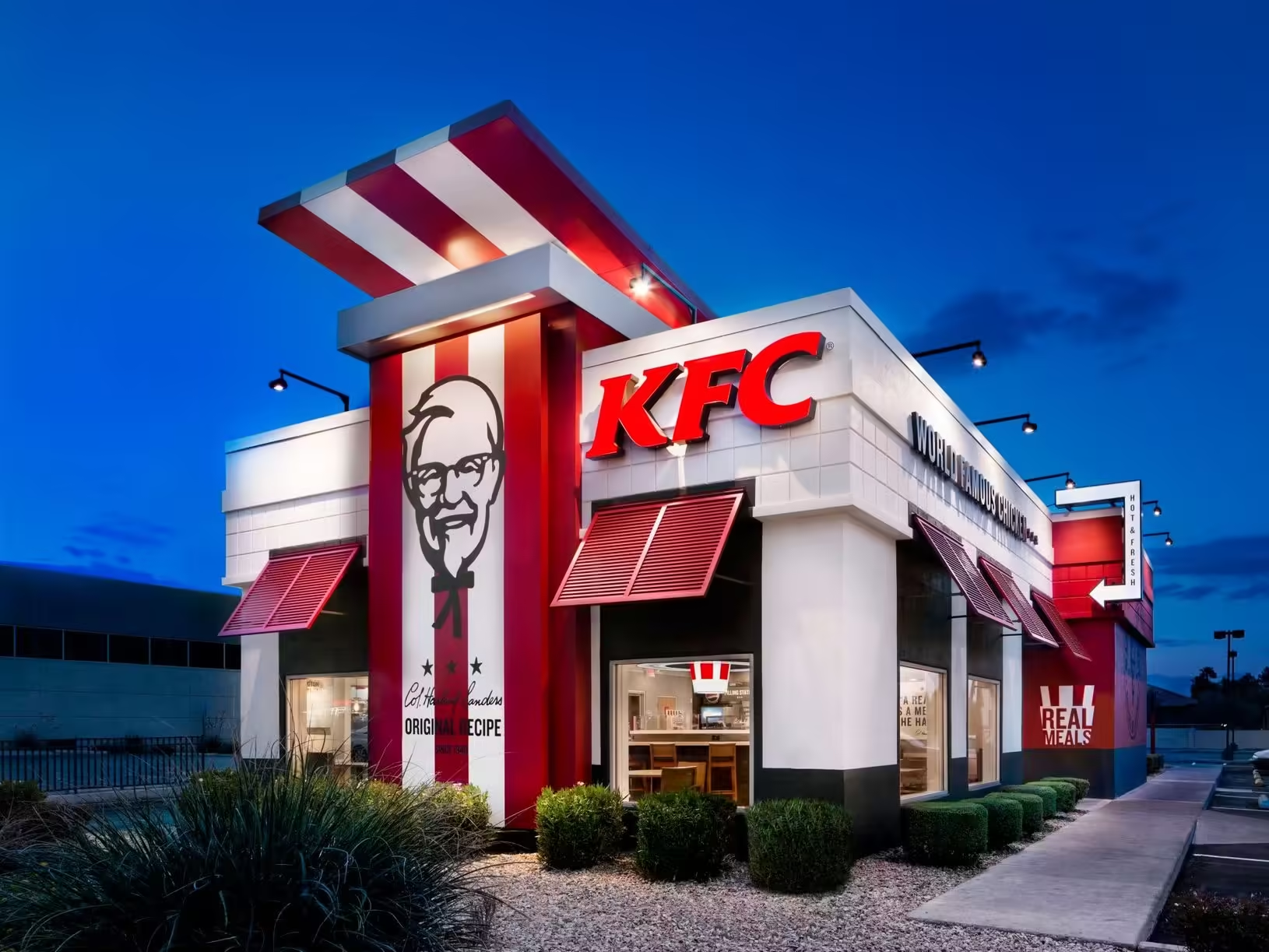
Introduction
Kentucky Fried Chicken (KFC) is one of the world’s most recognizable fast-food brands, famous for its finger-lickin’ good chicken. Founded by Colonel Harland Sanders in 1930, KFC has grown into a global powerhouse with a rich history and a reputation for high-quality, flavorful food. Known for its Original Recipe chicken with a secret blend of 11 herbs and spices, KFC continues to attract customers with its iconic menu and innovative offerings.
Franchise Models
KFC offers several franchise models to fit different market needs:
- Traditional KFC Restaurants: Full-service locations with dine-in, takeout, and drive-thru options.
- Non-Traditional Locations: Smaller setups in locations like malls, airports, and food courts, focusing on high-traffic areas with a limited menu.
Investment Required
The initial investment for a KFC franchise typically ranges from $1.2 million to $2.5 million. This investment includes the franchise fee, construction, equipment, initial inventory, and working capital. The exact cost can vary based on the location, size, and specific requirements of the restaurant.
Space Required
The space requirements for a KFC franchise depend on the model:
- Traditional KFC Restaurants: Approximately 1,600 to 2,500 square feet.
- Non-Traditional Locations: Around 500 to 1,200 square feet.
Top Selling Items
KFC’s menu features a variety of popular items, including:
- Original Recipe Chicken
- Extra Crispy Chicken
- Chicken Sandwiches
- Popcorn Chicken
- Chicken Tenders
- Mashed Potatoes with Gravy
- Coleslaw
- Biscuits
Number of Outlets
As of 2024, KFC operates over 600 locations across Canada, demonstrating its strong presence and popularity in the Canadian fast-food market.
Royalty Fee
The royalty fee for a KFC franchise is typically 5% of gross sales. This fee covers ongoing support, marketing efforts, and access to the brand’s proprietary systems, recipes, and operational expertise.
And More
- Training and Support: KFC offers comprehensive training programs for new franchisees, including hands-on training at existing restaurants and ongoing support from a dedicated franchise support team.
- Marketing: Franchisees benefit from national and regional marketing campaigns designed to drive customer traffic and build brand recognition.
- Innovation: KFC invests in continuous product innovation and menu development to keep the brand fresh and exciting for customers.
- Community Engagement: KFC encourages franchisees to engage with their local communities through sponsorships, events, and charitable activities, enhancing the brand’s positive image and local connections.
10. Harvey’s
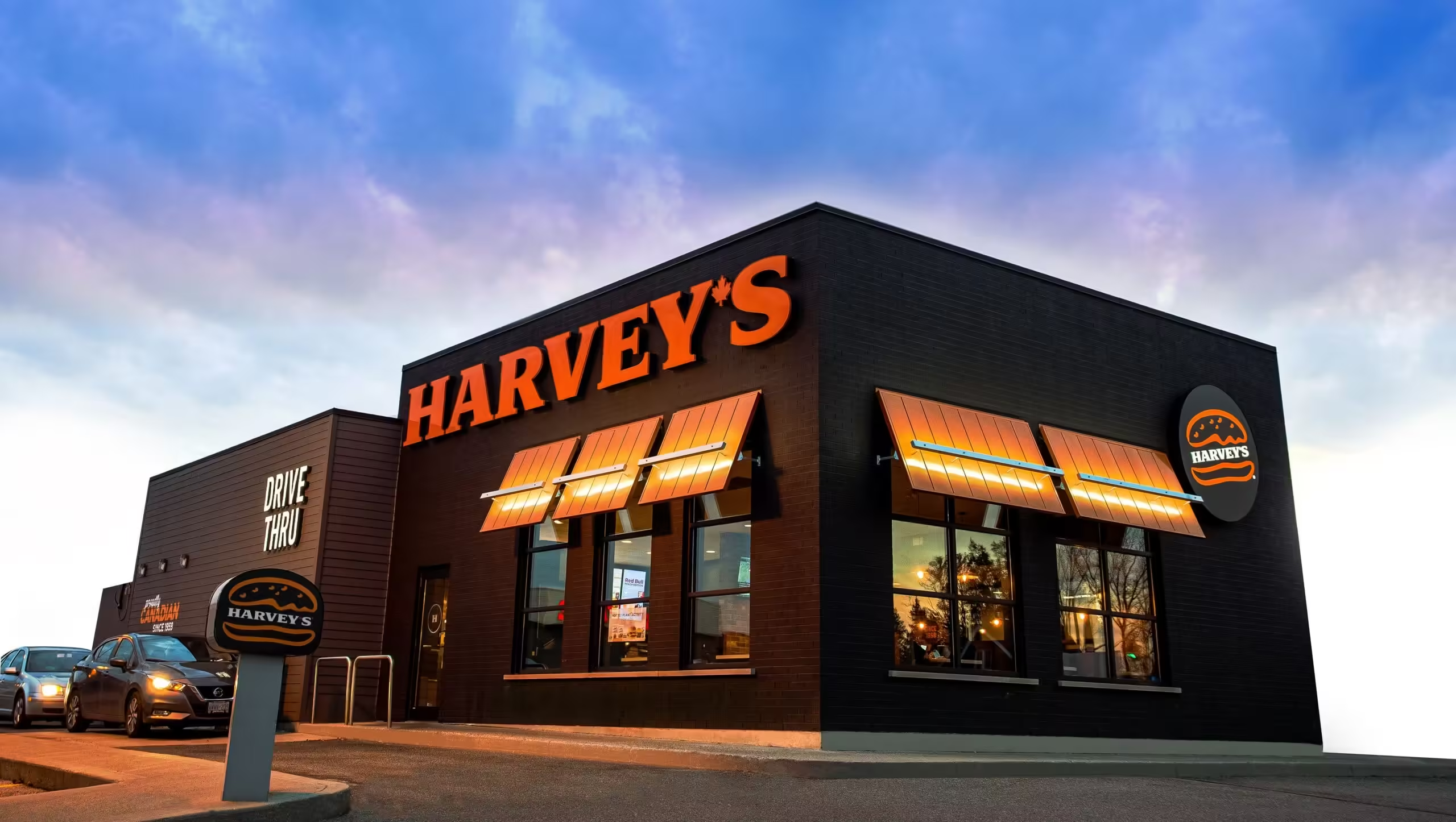
Introduction
Harvey’s is one of Canada’s iconic fast-food chains, renowned for its flame-grilled burgers and customizable menu options. Established in 1959, Harvey’s has built a strong reputation for quality, freshness, and customer satisfaction. With a commitment to providing great-tasting food and a memorable dining experience, Harvey’s continues to be a favorite among Canadians.
Franchise Models
Harvey’s offers several franchise models to cater to different business environments:
- Traditional Restaurants: Full-service locations with dine-in, takeout, and drive-thru options.
- Non-Traditional Locations: Smaller setups in places such as malls, airports, and universities, focusing on high-traffic areas with a streamlined menu.
Investment Required
The initial investment for a Harvey’s franchise typically ranges from $600,000 to $1.5 million. This investment includes the franchise fee, construction costs, equipment, initial inventory, and working capital. The total cost can vary based on location, size, and specific requirements of the restaurant.
Space Required
The space requirements for a Harvey’s franchise depend on the model:
- Traditional Restaurants: Approximately 1,500 to 2,500 square feet.
- Non-Traditional Locations: Around 500 to 1,200 square feet.
Top Selling Items
Harvey’s menu features a variety of popular items, including:
- Original Hamburgers
- Cheeseburgers
- Bacon Double Cheeseburgers
- Grilled Chicken Sandwiches
- Veggie Burgers
- Poutine
- Onion Rings
- Milkshakes
Number of Outlets
As of 2024, Harvey’s operates over 270 locations across Canada, highlighting its established presence and popularity in the Canadian fast-food market.
Royalty Fee
The royalty fee for a Harvey’s franchise is typically 5% of gross sales. This fee covers ongoing support, marketing efforts, and access to the brand’s proprietary systems, recipes, and operational expertise.
And More
- Training and Support: Harvey’s provides extensive training programs for new franchisees, including hands-on training at existing restaurants and ongoing support from a dedicated franchise support team.
- Marketing: Franchisees benefit from national and regional marketing campaigns designed to drive customer traffic and enhance brand recognition.
- Quality and Freshness: Harvey’s emphasizes the use of fresh, high-quality ingredients, and offers a wide range of customizable menu options to cater to diverse customer preferences.
- Community Engagement: Harvey’s encourages franchisees to participate in local events and community initiatives, fostering strong local connections and brand loyalty.
Disclaimer
The information provided in this blog, “Top 10 Most Successful Restaurant Franchises in Canada,” is for general informational purposes only. While we strive to keep the information up-to-date and accurate, we make no representations or warranties of any kind, express or implied, about the completeness, accuracy, reliability, suitability, or availability with respect to the blog or the information, products, services, or related graphics contained in the blog for any purpose. Any reliance you place on such information is therefore strictly at your own risk.
In no event will we be liable for any loss or damage including without limitation, indirect or consequential loss or damage, or any loss or damage whatsoever arising from loss of data or profits arising out of, or in connection with, the use of this blog.
Through this blog, you may be able to link to other websites which are not under the control of the blog owner. We have no control over the nature, content, and availability of those sites. The inclusion of any links does not necessarily imply a recommendation or endorse the views expressed within them.
Every effort is made to keep the blog up and running smoothly. However, the blog owner takes no responsibility for, and will not be liable for, the blog being temporarily unavailable due to technical issues beyond our control.
